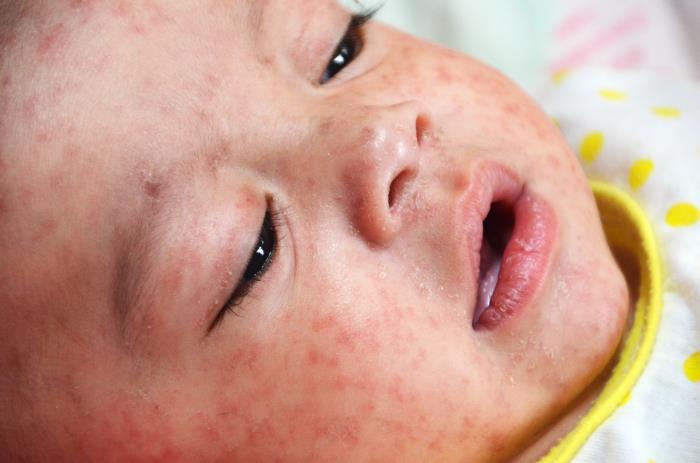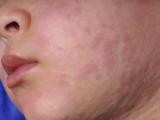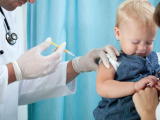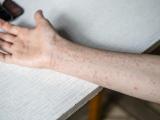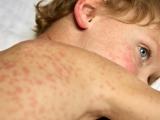A single measles case in an international traveler returning to New York City in 2013 triggered an outbreak that sickened 58 people, most of them unvaccinated, and cost the city's health department $395,000, researchers reported today.
The cost to communities and taxpayers comes at a time when nonmedical vaccine exemption policies are in flux, with some states toughening them while other states consider broadening the rules. As lawmakers and health officials weigh all the different vaccination issues and rules, one public health expert said fees for nonmedical exemptions—designed to offset outbreak response costs—should be part of the discussion mix.
Transmission in a close-knit community amid vaccine refusal
The first patient was an unvaccinated adolescent who returned to New York City while infectious after visiting London. The outbreak, centered in the orthodox Jewish community, marked the city's biggest measles outbreak since 1992. Writing in JAMA Pediatrics, a team from the New York City of Department of Health and Mental Hygiene (DOHMH) and the US Centers for Disease Control and Prevention (CDC), calculated the personnel time and direct costs of investigating and responding to the outbreak.
With the first case reported in March, health officials spent the next 4 months fielding reports of suspected cases, interviewing patients, reviewing medical and immunization records, tracing contacts, and doing community outreach.
The 58 cases came from two neighborhoods of Brooklyn, many of them members of eight extended families, and involved six generations of transmission. Of the total, 45 (78%) were at least 12 months old and weren't vaccinated due to parental refusal or intentional delay. Twelve patients were younger than 12 months old and were too young to be immunized with measles, mumps, and rubella (MMR) vaccine. One patient was an adult who reported a history of receiving a measles-containing vaccine as a child.
The most common transmission source was an infected relative, followed by building of residence, friends or playmates, and health settings. Some had unknown infection sources.
Of those sickened in the outbreak, two had complications—one had pneumonia and one miscarried. An unvaccinated woman who had a rash at 38 weeks gestation gave birth to a baby who had detectable measles virus antibodies 9 days after birth.
Exposures occurred at 11 healthcare facilities, as well as schools, an airline flight, residential buildings, households, and a wedding. Health officials identified 3,351 exposed contacts and found that 2,216 (66%) had evidence of measles immunity based on receipt of two documented doses of measles-containing vaccine, a positive measles IgG tier, or birth before 1957. Of the remaining contacts, 376 had received 1 dose of vaccine, 335 were susceptible, and immunity status was unknown for 426.
As part of the response, MMR vaccine was given within 3 days of exposure to 114 contacts ages 6 months and older, and immunoglobulin was administered within a week of exposure to babies younger than 6 month and infants ages 6 to 11 months who had not received MMR prophylaxis.
Conservative estimate of staff time
When the group tallied up the staff costs of responding to the outbreak, they found that 87 workers from 12 DOHMH offices participated. About half were from outside of the immunization office, nearly all were funded by the DOHMH, and about two-thirds performed their duties in line with their job descriptions.
Public health workers spent a total of 10,054 hours responding to and controlling the outbreak, with the biggest chunks of time spent on investigations and lab work. Most of the $394,448 direct cost of the outbreak was staff time, but other costs included advertising (nearly $30,000), MMR vaccine ($17,590), lab supplies and testing ($9,316), and courier service ($4,886). They said their cost estimate is conservative and doesn't take into account unpaid work hours and salaries of workers from other agencies.
The authors noted that the outbreak required health officials to redirect resources away from other public health activities, but that the cost of the outbreak was within the range of earlier large outbreaks in the United States.
They concluded that their evaluation provides useful estimates of cost and personnel time for future outbreak planning and details significant burden that measles outbreaks place on public health agencies, underscoring the need for robust and flexible public health infrastructure.
Time for a fee for nonmedical vaccine exemptors?
In an editorial on the study in the same journal issue, Jason Schwartz, PhD, with the department of health policy and management at Yale School of Public Health, wrote that vaccine hesitancy is a growing threat to achievements of global vaccination efforts.
The prospect of having to quickly redirect resources on a large scale is daunting to health departments, few of which have resources that compare to New York City's DOHMH.
Alongside the health risks that unvaccinated people pose to themselves and others, especially those too young to be vaccinated, the economic burden from outbreaks is another lamentable consequence of individual decisions to reject evidence-based vaccination recommendations.
Extra costs borne by health departments to battle outbreaks feeds into discussions about the availability and consequences of nonmedical childhood vaccine exemptions, which create pockets of unvaccinated people that raise the risk of disease outbreaks in their communities, Schwartz wrote.
The new findings on outbreak costs come at a time when lawmakers in some states are eliminating or strengthening nonmedical exemptions, while others are considering broadening access to them, including in New York, he notes.
Schwartz questioned if the economic burden of the outbreak costs are simply part of the so-called cost of doing business for health departments, shouldered by them and taxpayers, or whether those who voluntarily decline or delay vaccination bear should responsibility for the consequences of their choices.
He pointed out that high vaccination rates in communities are a public good, regardless of one's personal decision to vaccinate. "Those who voluntarily choose to forego vaccination are thus free-riders, benefiting from this public good without contributing to it," Schwartz said.
One option to the inequality in US vaccination policy would be to require families who get nonmedical exemptions to pay a fee that would directly support vaccination activities, such as educational efforts, information systems, and outbreak response. Schwartz compared an "exemptor fee" to alternative service typically required of conscientious objectors when armed forces service is compulsory.
A fee-based component of US vaccination policy would raise many complexities, Schwartz said, emphasizing that reforming nonmedical exemption policies, optimizing physician-parent communication about vaccines, and alternative strategies are all topics that deserve more discussion and study.
See also:
Jul 30 JAMA Pediatr abstract
Jul 30 JAMA Pediatr editorial
